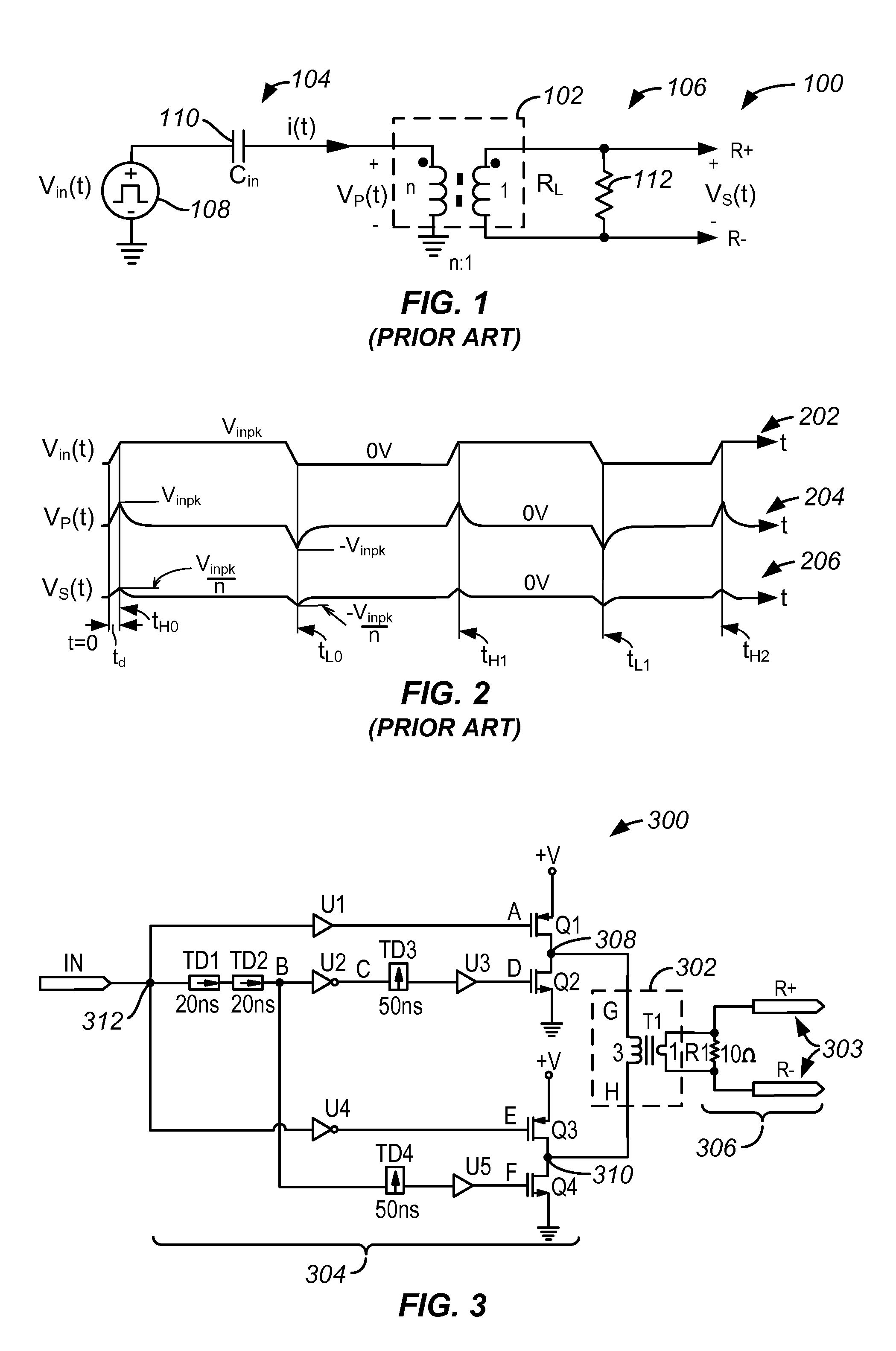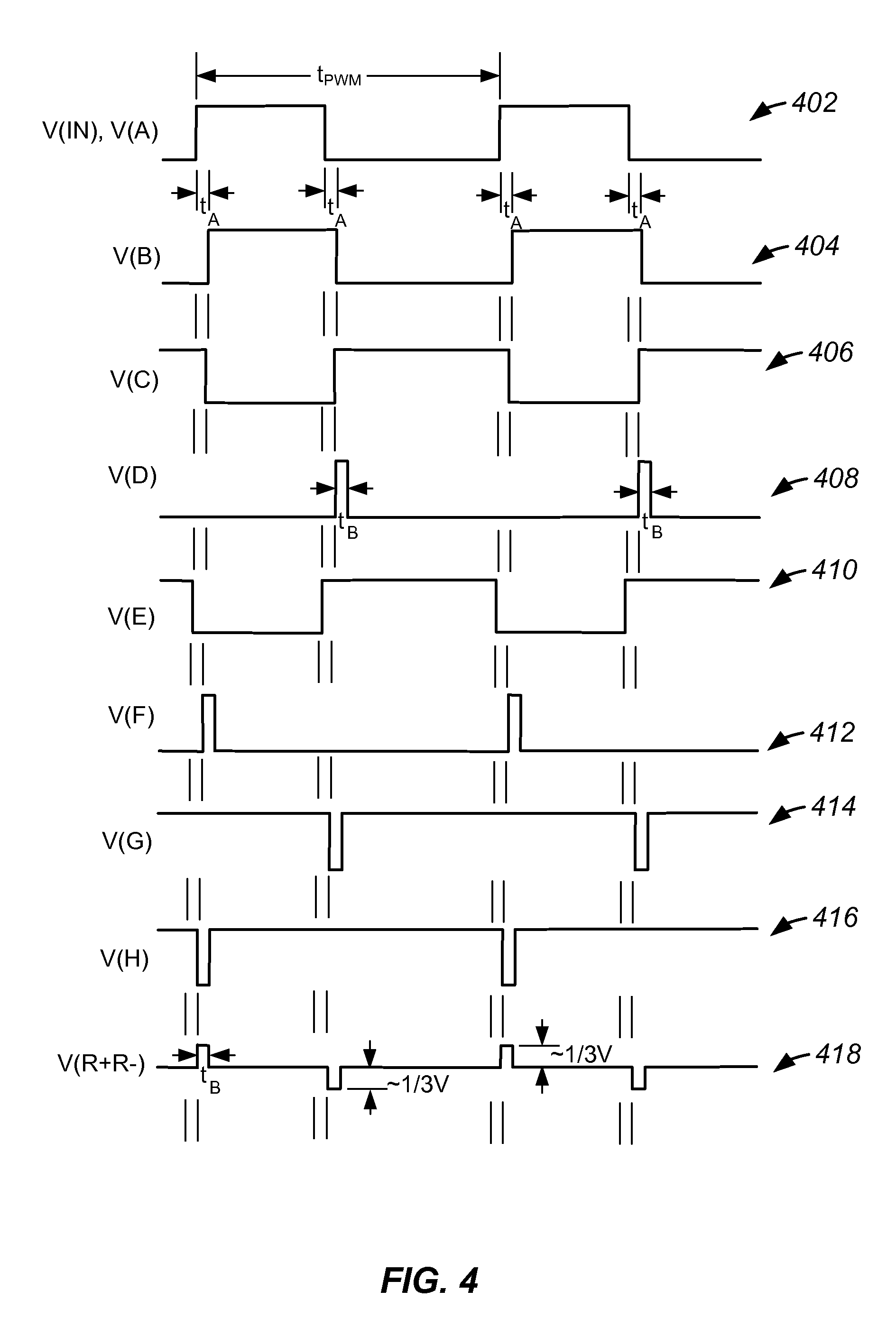Signal differentiation with differential conversion circuit
a conversion circuit and signal technology, applied in the field of circuits, can solve the problems of large required voltage isolation capacity, large volume of transformers, and large number of magnetic components in the package, and achieve the effects of preventing the saturation of transformers, eliminating frequency dependence between input signals, and preventing dc signal content from saturating magnetic components
- Summary
- Abstract
- Description
- Claims
- Application Information
AI Technical Summary
Benefits of technology
Problems solved by technology
Method used
Image
Examples
Embodiment Construction
[0024]The present invention relates to a circuit for transmitting signals. The circuit is provided within a packaged device including a magnetic component in one embodiment. The present invention is illustrated in the context of a gate driver. However, the invention is not limited to such an application. The invention may be used to transmit various signals across a magnetic component, e.g., a transformer. In one embodiment, the circuit is used to transmit binary information using the pulse width and / or duty cycles of input signals.
[0025]Embodiments of the present invention use short-time (or short-pulse) duration signals and / or differential inputs to a transformer to prevent the saturation of the transformer. This enables the use of a significantly smaller-sized transformer than otherwise possible. The circuit transmits primarily the edge transition information from the input side of the transformer to the output side of the transformer. A differential signal is obtained at the out...
PUM
 Login to View More
Login to View More Abstract
Description
Claims
Application Information
 Login to View More
Login to View More - R&D
- Intellectual Property
- Life Sciences
- Materials
- Tech Scout
- Unparalleled Data Quality
- Higher Quality Content
- 60% Fewer Hallucinations
Browse by: Latest US Patents, China's latest patents, Technical Efficacy Thesaurus, Application Domain, Technology Topic, Popular Technical Reports.
© 2025 PatSnap. All rights reserved.Legal|Privacy policy|Modern Slavery Act Transparency Statement|Sitemap|About US| Contact US: help@patsnap.com



